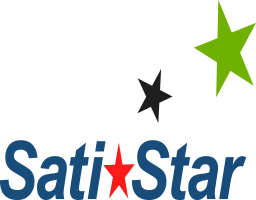Socio-Technical Systems
Overview
In organizational development, socio-technical systems (or STS) is an approach to complex organizational work design that recognizes the interaction between people and technology in workplaces.
The term socio-technical system also refers to the interaction between society’s complex infrastructures and human behaviour. In this sense, society itself, and most of its sub-structures, are complex socio-technical systems.
At the heart of successful, sustainable improvement is a well designed program that strikes a balance between the technical and the social aspects of improvement.
Scope And Deliverables
Sociotechnical systems theory is a theory stating that effective work sites have joint optimization of their social and technological systems, and that teams should have sufficient autonomy to control key variances in the work process.
It is often used in the context of self directed work teams (SDWTs) which are cross functional work groups organized around work processes that complete an entire piece of work, requiring several interdependent tasks, and that have substantial autonomy over the execution of those tasks.
Critics of socio-technical systems have pointed out that improvements while real, are only as good as the current manager’s knowledge and willingness to use the concepts. The real challenge to organizations is to create socio-technical systems that can be sustained over long periods of time. Organizational culture is an important component in creating effective socio-technical systems.
Systems theory must be carefully understood by organizational management to have a positive impact on productivity. Management that integrates socio-technical systems into planning for performance, show long term consistent gains in productivity and performance.
The basic premise of involving your employees in workplace decision-making has proven to be a key component in sustained performance improvement.
What We Will Do
- Facilitate leadership team meetings to clearly articulate a vision of the future state that includes the desired outcomes for the change.
- Understand your organization’s current culture, processes and practices.
- Determine the optimal interaction between your technical and social structures.
- Define a change strategy (or combination of strategies) that is/are consistent with your organizational system.
- Propose a methodology for achieving the change, that shows immediate and highly tactical actions.
- Provide a clear roadmap and timeline for implementing the methodology.
- Facilitate the implementation of the agreed-upon change strategy.
- Develop an agreed-upon approach for measuring and monitoring progress.
- Create an appropriate progress communication vehicle.
- Provide guidance on an organizationally suitable reward and recognition approach.
What We Need You To Do
- Commit to the change.
- Ensure the active participation of the leadership team in the change program.
- Provide us with access to the required internal personnel.
- Authorize those personnel to provide us with the required information in a timely fashion.
- Assign resources as needed.
- Implement approved recommendations in a timely manner.
WHAT PEOPLE ARE SAYING
SatiStar's Experience Makes The Difference!
